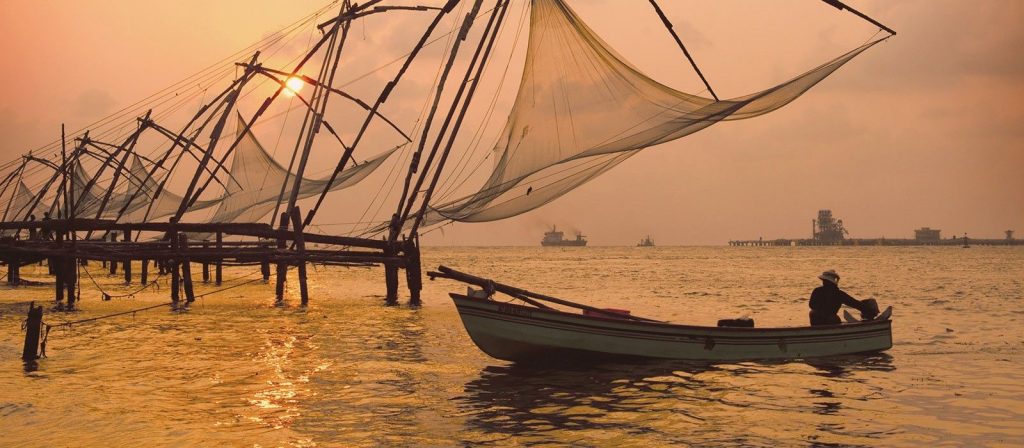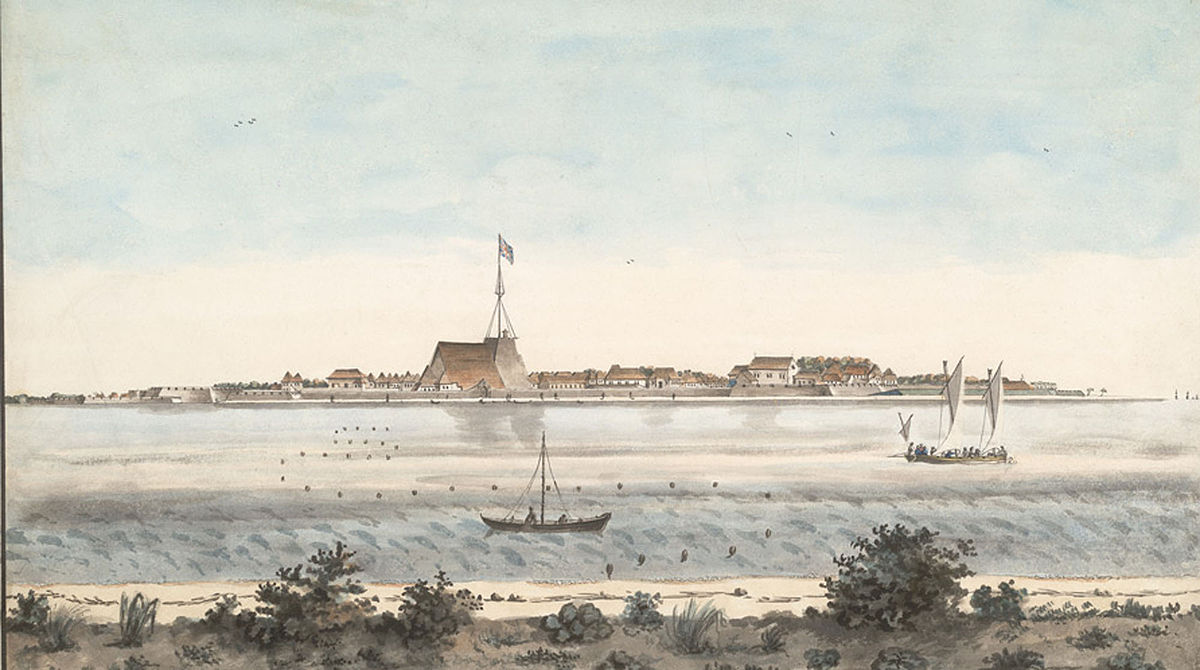Don Louys D’andrado was part of the Dutch expedition which lay siege to Cochin in 1663.

The city of Cochin today is a rapidly developing city in the southern Indian state of Kerala. A name unheard for many years is now becoming a popular tourist destination, together with the city of Goa. Cochin is also building its port facilities and an International Airport to vie with many of the best port cities in the region.
However the Cochin connection with the family begins in far off 1663. This was a time of Dutch expansion in the Indian Ocean. By 1658 the Dutch has conquered Jaffna and with it the entire maritime provinces of Ceylon. Their attention then turned towards India. Most of the incursions into India were undertaken from Ceylon. After a few unsuccessful attempts the Dutch lay siege and finally captured the fort at Cochin in 1663.
For these expeditions, the Dutch used the services of Ceylonese Lascorins (soldiers), led by their own Singhalese commanders. One of these local commanders was Don Louise D’Andrado, who joined the Dutch columns with sixty Lascorins of Kalutara for possibly an excursion in 1659. This fact is recorded in the minutes of the Extraordinary Meeting of the Council of Ceylon of 12th January 1660 and is reproduced below (see the D’andrado Papers). The place described, as Keylam is further south of Cochin and is actually known as Quilon.
|
EXTRAORDINARY MEETING OF THE COUNCIL OF CEYLON 12-16 Jan., 1660 Vol. 9, Fol. 188 1/2. Expedition against Cochin and Keylam With a view to enlarging this military force and because certain volunteers among the Islander troops or lascorins offering their services for this expedition, it was resolved to take in addition : The Mudaliyar of Negombo with one hundred troops, Dom Luys d’ Andrade of Kalutara with sixty troops, Joan Rodrigues Arache of Colombo with twenty troops, The Arachchi of Matara with a company of forty, making a contingent of upwards of two hundred island soldiers. |
The extraordinary man who took part in the siege of Cochin was Don Louis D’Anderado, Adigar of Kalutara and Walawita Korale. He married a Sister of Don Manuel D’Anderado.
The Dutch also presented him with a gold chain for his services at the siege and capture of Cochin in India, 1663.
“As reward for the fine services of the Singhalese Chieftains Mo-otty Appuhamy and Louis d’Andrade rendered at the siege and capture of Cochin and in order to link them more closely to the Company, it was resolved and decreed to bestow on each of them an honorarium of eighty Rix-dollars together with a gold chain or similar gift.”
Secret Resolutions of the Dutch Council, Vol. 10, page 22, 1st September 1663.
The Rix dollar was equivalent to approx 2 shillings sterling in 1802 (de Silva 1962, Volume II:533), or equivalent to Rs. 1.13 in 1907 (Arnold Wright 20th Century Impressions).
The Dutch has also presented him with a silver sword in 1665 for distinguished conduct in the 1665 campaign against the rebel subjects of Raja Singha II (Ref Colombo Dutch Records – Proceedings of the Dutch Council dated 15-11-1668, and Paul Pieris ; “The Illangakoon Family” p. 21).
History of Cochin – The Portuguese Era
The city of Cochin came under the Portuguese from December 1500, when the first Portuguese fleet called on its port. The admiral of this fleet was Pedro Alvares Cabral (the discoverer of Brazil). The Rajah (king) of Cochin allowed that a “feitoria” (factory) be allocated to the Portuguese and upon Cabral’s departure he allowed that thirty Portuguese and four Franciscan friars stayed in Cochin.
In 1502 a new expedition under the command of Vasco da Gama arrived at Cochin, and the friendship with the Rajah of Cochin was renewed. After the departure of Vasco da Gama, the Zamorin of Calicut, enemy of the Portuguese, attacked Cochin and destroyed the Portuguese “feitoria”. But the Portuguese army helped the Raja to regain his positions and the Portuguese reinstated him on the throne. The grateful Raja permitted the Portuguese to erect a fort at Cochin to safeguard the interests of their factory. In 27th of September 1503 the foundations of a timber fortress were laid and was christened as Fort Manuel in honour of the King of Portugal. This was the first fortress erected by the Portuguese in India. In 1505, the same year Lorenco de Almaida discovered Ceylon, a stone fortress was erected to replace the wooden fortress of Cochin.
The St. Francis Church in Cochin was the first church of its kind built in Kerala by the Portuguese. Franciscans built a beautiful church dedicated to São Francisco de Assis (1516-1522). On his 3rd visit to Kerala, Vasco da Gama, the first Portuguese traveler to reach India from Europe by sea, fell ill and died in Cochin. He was buried in the St. Francis Church on Christmas Eve of 1524 . Later his remains were taken back to Portugal. In spite of that the exact place where he was buried has been marked out inside the church. This church is a living historical monument of today’s Cochin and one of it’s main tourist attractions.
History of Cochin – The Dutch Era
Watercolour painting of the fort of Cochin from across the backwaters, unknown artist, around 1800
The Dutch set their eyes on Cochin after their occupation of Ceylon in 1658.They took Quilon on 29 December 1658, but the Portuguese re-conquered it on 14 April 1659. However, in 1661, the Dutch began a new expedition against the Portuguese settlements in Malabar. An expedition under Ryckloff Van Goens conquered Quilon on 24 December 1661 and on 15 January 1662 Cranganore was also taken. Soon after, on 5 February 1662, the Dutch began their assault on Cochin but encountering heroic Portuguese resistance, after one month, abandoned the siege.
They came back on November 1662 and surrounded Cochin by all sides. For three months, the Portuguese resisted but, finally, on 7 January 1663, they surrendered the city. On the morning of 8 January 1663, the soldiers and citizens came out of the fort and laid down their arms and the Dutch took possession thereof.
The grateful Dutch presented Don Louise D’andrado with a gold chain for his services rendered at this siege and capture of Cochin in India, 1663.
Additional Information:
Destination Cochin (www.cochin.org).
